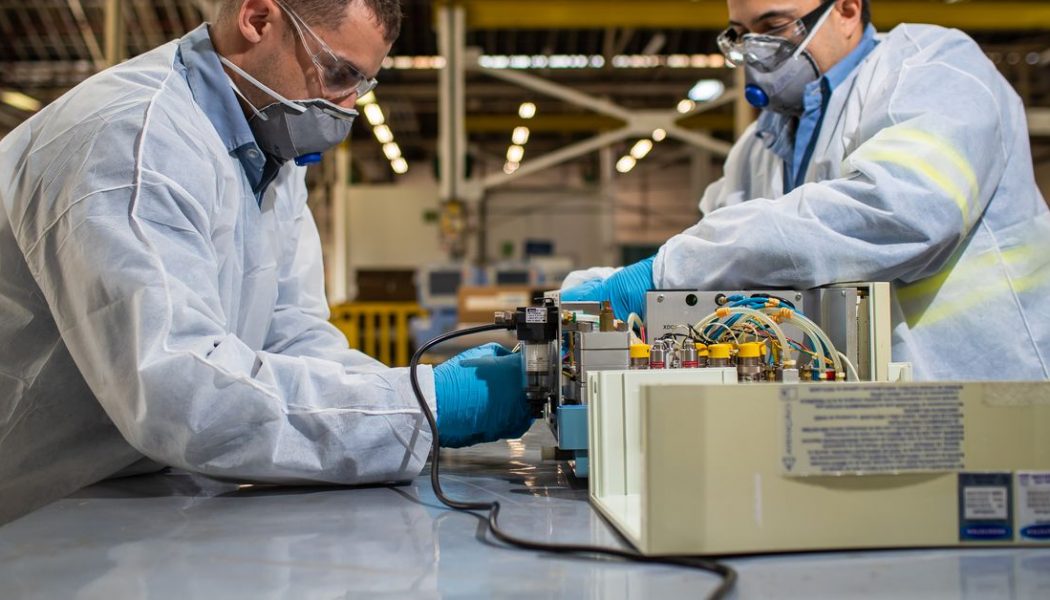
Teardown and repair website iFixit has just posted what its CEO Kyle Wiens says is “the most comprehensive online resource for medical repair professionals.” The new database contains dedicated sections for clinical, laboratory, and medical support equipment, in addition to numerous other categories of devices. It also provides more than 13,000 manuals from hundreds of medical device manufacturers.
Wiens says the effort began with a crowdsourcing campaign to collect repair information for hospital equipment, with a focus on “ventilator documentation, anesthesia systems, and respiratory analyzers — devices widely used to support COVID-19 patients.” But the effort grew from there, spanning more than two months as iFixit added dozens more staff members to the project; began talking to more biomedical technicians, doctors, and nurses about their day-to-day needs; and started collecting and cataloging information from libraries and other sources.
“Hospitals are having trouble getting service information to fix medical equipment — and it’s not just a COVID-19 problem. We’ve heard countless stories from biomedical technicians (biomeds, for short) about how medical device manufacturers make their jobs more difficult by restricting access to repair information,” Wiens writes in iFixit’s blog post about the new database. “Thanks to travel limitations, the problem is bigger than ever. Manufacturer service reps can’t keep pace with the growing demand for repair of critical hospital equipment. Even if they could, they can’t respond as quickly as the biomeds, already at the front lines.”
Wiens says that it’s common for biomeds to spend hours on the internet looking for repair information to fix a device or prevent a crucial piece of equipment from failing when it’s needed most. “So we’re fixing it. For the last two months, iFixit has pivoted half of its staff toward building the world’s most comprehensive medical equipment service database. It’s a central, multi-manufacturer library of user manuals and repair documentation for thousands of devices,” he writes.
I have spent the last two months heads down working on a huge project with the assistance of 200 volunteer librarians. It has daunted, exhausted, intimidated, and inspired us.
I’m proud to launch iFixit’s Medical Device manual database:https://t.co/Ca5smPy08N /1 pic.twitter.com/s7oOGdBBtJ
— Kyle Wiens (@kwiens) May 19, 2020
The medical repair database is split up into nine categories, with each containing countless subcategories for basically any type of device you’d find in a medical setting. For instance, the clinical equipment category contains 53 subcategories for everything from anesthesia systems and Bilevel Positive Airway Pressure (BiPAP) machines to respiratory analyzers and ventilators. The database also has medical training manuals, information on medical furniture like decontamination systems and hospital beds, and an exhaustive section on surgical equipment repair and maintenance.
Wiens explains in iFixit’s announcement post that some medical device manufacturers make this information more easily available online than others. “But for their day-to-day work, biomeds have long relied on a rag-tag set of web resources to get the job done. Among the most popular is Frank’s Hospital Workshop, a Tanzania-based site that hosts hundreds of medical device manuals — it’s the unofficial biomed bible,” Wiens writes. The goal was not to outdo that website or try to overtake it in popularity, but to add new documents and manuals that weren’t available before to a database including existing resources.
“To be very clear: iFixit does not make money on this project. We are providing hosting and curation free of charge, and free of advertising, to the medical community,” Wiens says. “We welcome manufacturers to join us and contribute toward an up-to-date central repository for the biomedical community. We also welcome biomeds around the world to join iFixit’s repair community. No technician is an island, and we hope to facilitate an exchange of knowledge and troubleshooting.”










